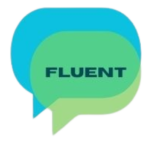Comma splices in English writing: What they are and how to fix them (and when they’re okay)

If you didn’t learn how to use commas in school, or if English isn’t your first language, it’s understandable that you might not know what a comma splice is. In short, it’s one of the most common punctuation errors in high school essays in particular, and if you never learned to fix it as a teenager, or if you’re just learning or looking to improve your understanding of English punctuation rules now, it’s possible that you’re still making the same error in professional emails or in other written communications.
Luckily, it’s never too late to learn something new.
So, what’s a comma splice? It’s when two independent clauses are connected by a comma alone. To illustrate:
We’ve been waiting for 45 minutes, the bus still hasn’t arrived.
In the example above, we have two complete independent thoughts, also known as two independent clauses: We’ve been waiting for 45 minutes, and the bus still hasn’t arrived. These are independent clauses because they each have a subject and a verb, and they do not need any extra information to be understood as complete ideas. You can write or say “We’ve been waiting for 45 minutes,” or “The bus still hasn’t arrived,” and you can expect your audience to understand each sentence as a complete thought. In writing, when you finish a complete idea, you should use a period (also called a full stop in many English-speaking regions outside of North America).
Wait, so, is a period the answer to the comma splice error above? Yes, but it is only one of three possible fixes. The three punctuation methods we can use to correct a comma splice are as follows:
1. Use a period to separate two independent clauses.
Example: We’ve been waiting for 45 minutes. The bus still hasn’t arrived.
This is often the easiest solution. Just make them two separate sentences! Here is another example:
Incorrect: Brenda baked a cake, it smelled wonderful.
Correct: Brenda baked a cake. It smelled wonderful.
Do you see how these are two independent clauses? Let’s try something a little more difficult:
Incorrect: We woke up late, as a result, we were late for breakfast.
Correct: We woke up late. As a result, we were late for breakfast.
In this case, there is a transitional phrase that is part of the second idea, but we still need to use a period to close the first complete idea. Note that you need to use a comma after the transitional phrase. You also do this when you start a second sentence with words and phrases such as however, regardless, in addition, in essence, etc.
2. Use a semicolon to separate two independent clauses that are closely related.
Example: We’ve been waiting for 45 minutes; the bus still hasn’t arrived.
Semicolons have multiple uses. One of their uses is to separate (or connect, if you prefer to think of it that way) closely related clauses. The two sentences above are definitely closely related, as they both deal with waiting for the bus. If you’re wondering whether to use a period or a semicolon, in most situations, a period is just fine. However, if you want to add variety to your writing, a semicolon can look quite nice, as the pause effect it creates in a piece of writing is shorter than that of a period. Also, remember to use a lowercase letter when you start the clause which comes after the semicolon. Let’s take a look at another example:
Incorrect: His books weren’t well-known while he was alive, they only became popular 20 years after his death.
Correct: His books weren’t well-known while he was alive; they only became popular 20 years after his death.
When it comes to using semicolons before transitional words and phrases, the same rules apply as they do for the period.
Incorrect: We drove to the bakery, unfortunately, it was closed.
Correct: We drove to the bakery; unfortunately, it was closed.
As you can see, semicolons can be a useful alternative to periods. I don’t recommend overusing them, as some readers will find them distracting and might ask you why you’re not just using a period, but when used sparingly, semicolons can have a positive impact on your writing.
3. Use a comma and a conjunction to connect two independent clauses.
Example: We’ve been waiting for 45 minutes, and the bus still hasn’t arrived.
This is often the most elegant solution to the problem of comma splices. If you really want to use a comma, you just need to add a conjunction after it to combine the two independent clauses. The most common conjunctions to do this with are coordinating conjunctions, which are the words for, and, nor, but, or, yet, and so. Most comma splices can be fixed with and, or, or but. Let’s take a look at two examples:
Incorrect: Alex wanted a new bike, he didn’t have the money for it.
Correct: Alex wanted a new bike, but he didn’t have the money for it.
Incorrect: We started the project in January, it still isn’t finished.
Correct: We started the project in January, and it still isn’t finished.
As you can see, in each of the examples above, we have combined two ideas into one smooth sentence by joining them with a coordinating conjunction.
And these are the three punctuation fixes for comma splices. But wait, can you ever combine independent clauses with commas? Yes. As with many rules, there are exceptions, and the rules are sometimes broken to create a desired effect. This is most common in literature. Let’s take a closer look, shall we?
Acceptable comma splices

While comma splices should be avoided in most formal writing, they are used in casual prose literature, and depending on the person grading your composition or editing your work, they may even be accepted.
In the context of literary prose, comma splices are sometimes used to add a sense of continuous movement or excitement to a series of actions. This is quite common when a character’s thoughts are shown to be racing. Let’s take a look at a couple of examples:
She ran, she laughed, she danced!
I didn’t speak, I didn’t move, and I didn’t look at anyone in the room.
In these cases, comma splices create a sense of a stream of consciousness–of thoughts that come quickly, one after another. It’s as if the actions are part of a list. Periods would also work in these examples, but the effect wouldn’t be the same.
Perhaps the most popular English literary saying which uses comma splices is “I came, I saw, I conquered.” This is the English translation of the Latin phrase “veni, vidi, vici,” which is attributed to Julius Caesar.
Still not convinced? Take a look at the beginning of A Tale of Two Cities by Charles Dickens, one of the most renowned authors in the history of English literature:
“It was the best of times, it was the worst of times, it was the age of wisdom, it was the age of foolishness, it was the epoch of belief, it was the epoch of incredulity, it was the season of Light, it was the season of Darkness, it was the spring of hope, it was the winter of despair, we had everything before us, we had nothing before us, we were all going direct to Heaven, we were all going direct the other way—in short, the period was so far like the present period, that some of its noisiest authorities insisted on its being received, for good or for evil, in the superlative degree of comparison only.”
To personalize the point above, I am currently reading The Folk of the Air, a fantasy novel by Peter S. Beagle. Mr. Beagle is definitely a fan of comma splices. Here are two examples from the book, with the comma spliced clauses highlighted in bold:
“A raging, hammering weight was abroad him, a crowbar forearm crushed his throat, and a sound like trees splitting in a great storm was going on somewhere quite near.” (p.211)
“I’ve seen her make a total fool of herself, I’ve seen her embarrass people stupidly and make an owl sort of obey her, and she is running around with somebody she called out of somewhere who should definitely not be here.” (p.241)
For more literary and extraliterary examples of comma splices, I recommend this excellent post from the Sentence First blog by Stan Carey.
It is also relevant to note that one of the most famous English style guides, The Elements of Style by William Strunk Jr. and E.B. White, allows for comma splices when the two clauses are short and alike. Here is the the direct text:
“If the clauses are very short, and are alike in form, a comma is usually permissible:
Man proposes, God disposes. The gate swung apart, the bridge fell, the portcullis was drawn up.”
As you can see, the discussion on comma splices is not always so simple. In truth, punctuation guidelines in general are often played with in literature and in poetry. Poets in particular never met a punctuation rule, style format, or style guideline they didn’t want to break. “The Raven” by Edgar Allan Poe, for example, revels in semicolons, periods, and em dashes, but it’s one of the most beautiful English poems ever written.
So, am I suggesting that you start writing with comma splices aplenty because some authors and poets do it? No. Authors do still follow conventional punctuation rules, and when it comes to comma splices, most people reading your work will expect you to fix a comma splice with one of the punctuation methods mentioned in the first half of this article. In formal writing, two independent clauses separated by a comma alone are rarely seen as correct by most trained eyes. Unless you want to play with punctuation in a novel, poem, or short story, it’s usually best to stick to what is accepted.
Thank you for reading this far. If you’ve found this information useful, please consider supporting my work by purchasing my book. Until next time, I wish you success in your studies, and I look forward to reading your comments.


ernautdatheand6c0+6ukho7tohes3@gmail.com
laudantium unde saepe quia ea quod libero et debitis illo facilis alias. ipsam deserunt neque similique et asperiores et numquam ut ipsum adipisci dolores et omnis architecto et. modi neque aliquam no
Открыть учетную запись в binance
Thank you for your sharing. I am worried that I lack creative ideas. It is your article that makes me full of hope. Thank you. But, I have a question, can you help me?
Bouarfa Mohamed
Yes, what is it?
最佳Binance推荐代码
Thank you for your sharing. I am worried that I lack creative ideas. It is your article that makes me full of hope. Thank you. But, I have a question, can you help me?
Bouarfa Mohamed
Hapy to know that, thank you.